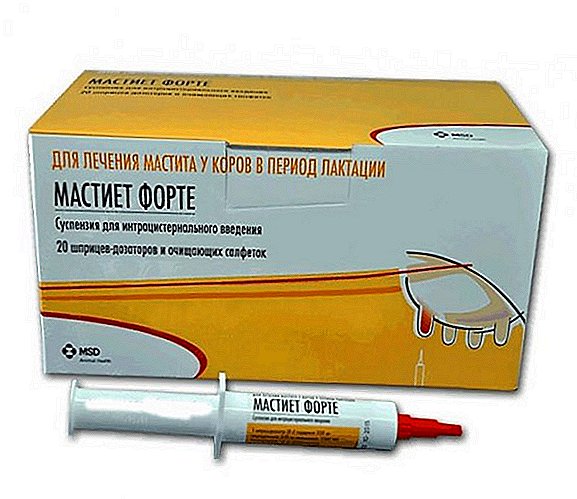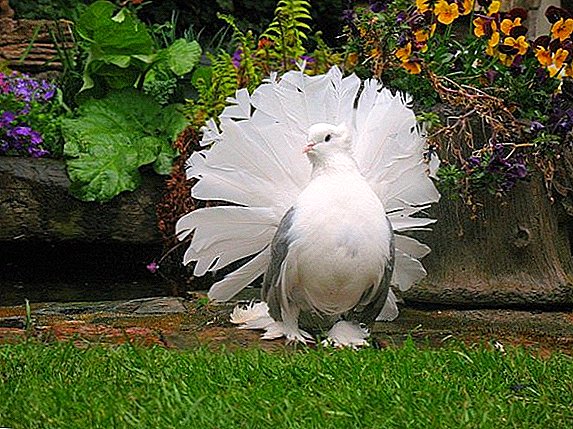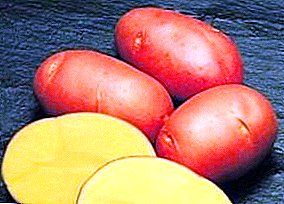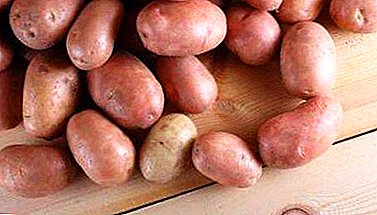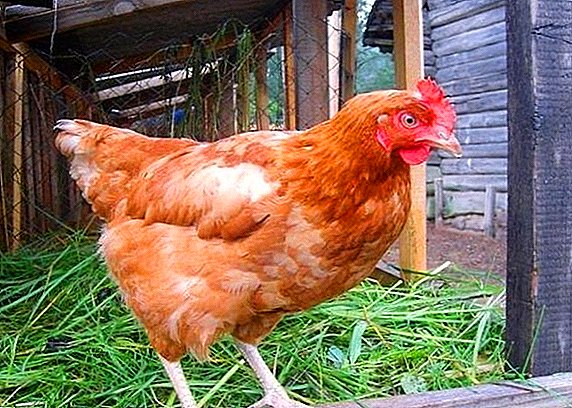 There is a huge variety of chicken breeds, while breeders are working daily to create new, more advanced species. One of the most popular recently has been the Tetra breed. This meat-egg chickens, which have a high level of egg production and delicious dietary meat. Next, let's talk about what Tetra so attracts farmers, and what are the features of its content.
There is a huge variety of chicken breeds, while breeders are working daily to create new, more advanced species. One of the most popular recently has been the Tetra breed. This meat-egg chickens, which have a high level of egg production and delicious dietary meat. Next, let's talk about what Tetra so attracts farmers, and what are the features of its content.
Origin
The main task of the breeders of the company Babolna Tetra (Hungary), who worked on the creation of a new hybrid, was the breeding of a highly productive breed with good taste properties of meat. 
The work lasted for quite a long time, and the result was first presented about 40 years ago. Tetra gained her popularity quite quickly in almost 30 countries at the same time.
Did you know? Chicken is able to independently determine the spoiled egg. She pushes him out of the nest. There is also no damaged egg in the nest - the bird eats it.
External characteristics
Distinctive characteristics of the appearance of the breed are:
- small head;
- pale yellow beak of high strength;
- scarlet leaf-like comb;
- short neck;
- body rectangle;
- small tail;
- resistant legs of medium length;
- wings compactly adjacent to the body;
- a round tummy in females or flat with a raised breast - in males.

On average, males weigh less than 3 kg, while females weigh 2.5 kg. In general, the color of the plumage of chickens is tan.
Important! Young individuals rapidly gain weight and start laying eggs rather early.
Breed character
The character of Tetra is balanced. They do not show aggression, behave a little awkwardly. Chickens are very active, do not sit in one place. Males, as a rule, do not come into conflict if they do not have to divide the female or territory.
Meat-egg breeds of chickens also include such ones as master gray, galan, Kyrgyz gray, plymouth, Paduans, Moscow white, Bress Gali, Kotlyarevskaya, Gilyanskaya, and Welsumer.
These are curious birds: they love to explore new spaces. But they do not try to escape: for them safety is paramount.
Chickens are not afraid of people and easily get along with others, devoid of aggression, birds. They are happy to contact the owners and their neighbors on the paddock. 
Productivity
The productivity indicators of these hybrids attract not only private farmers, but also large producers.
| No. p / p | Productivity indicator | Units | Value |
| 1 | Egg production | pcs / year | 300 |
| 2 | Average egg weight | g | 60-65 |
| 3 | Survival | % | 97 |
| 4 | Age of onset of egg laying | of the week | 18 |
Regarding meat, the amount of fat in it does not exceed 10%.
Learn about the beneficial properties of chicken meat.
The content of proteins and other vitamins is much higher than in other types of poultry meat. Regular consumption of Tetra meat helps to stabilize the metabolism and strengthen the immune system.
Diet
Meat-egg hybrids more than any other need a balanced diet. They start egg-laying early, so the body must have all the necessary vitamins and trace elements in sufficient quantity. 
Otherwise, chickens will have serious health problems that can be fatal.
Important! In order to develop normally, Tetra should eat 3 times a day.
Every day in the diet should be present: mash, grain, meat waste and dairy products. By the way, one chicken per day needs up to 150 g of food.
Blender
Blender is a mixture of grain with vegetables, roots, greens, flour, shells, vitamins, etc. It is fed birds twice a day.
Dry grain
Chickens are also fed dry grain: rye, barley, oats, millet, wheat, corn. This may be pure grain, self-prepared mixture, or purchased ready-made feed. 
Meat waste
Meat wastes can be added to the mash or fed in pure form. They can be any meat products, there are no strict restrictions.
Dairy products
Fermented milk products hybrid breeds are necessary for the proper formation of the skeleton and, in the future, a strong eggshell. It can also be added to the mash or given in pure form.
Conditions of detention
For the maintenance and breeding of Tetra, it is worthwhile to take care of creating optimal conditions for this:
- Dry, warm and spacious chicken coop with nests. Chickens of this breed do not need individual places for laying, absolutely any nest with straw, unoccupied by another individual, is suitable.
- Lighting the chicken coop, as the laying is done only in the daytime. The room should be light 12-13 hours a day.
- Daily airing of the room in which birds live, regular cleaning and disinfection (at least 2 times a year). Do not forget to timely change the litter and adjust its level depending on weather conditions.
- The presence of crossbars, the first of which should be placed at a level of 0.6 m from the floor.
- Prepared place for the reception of "dry" baths. Sand and ash, in which birds bathe, help them to get rid of parasites living on the body.
- Clean feeders and drinkers.
- Equipped walking with fencing and canopy.

Remember that the normal combination of individuals: 10 females per 1 male.
Chick care
Chickens grow fairly quickly, so the care for them should be paid special attention and a large amount of time:
- Feed babies every 2 hours.
- Make sure that their content is warm and clean. The best option is a cardboard box under the lamp. If chickens are lumped together - they are cold, if they are lethargic - hot.
- To maintain vitamin balance, crumbs are given fermented milk products, greens and yeast along with the main feed.
- Regularly clean them to prevent the development of various diseases.
Advantages and disadvantages
The main advantages of the breed:
- high survival rate (97-98%);
- good egg production (about 300 eggs per year);
- strong immune system;
- excellent taste of meat;
- ease of care and maintenance.

Among the shortcomings of Tetra, it is worth noting the high feed consumption (up to 45 kg per year per individual) and the lack of maternal instinct in chickens.
Did you know? A hen can memorize over 100 faces and recognize its owner from a distance of 10 meters.
Tetra breed chickens are non-aggressive meat and egg birds. They have not only juicy low-calorie meat, but also carry eggs well. With proper care and a good diet, birds behave actively and do not suffer from any diseases.
But if you seriously think about their breeding, be prepared for the fact that you have to take care of the offspring, as Tetras are not predisposed to taking care of their own cubs.



